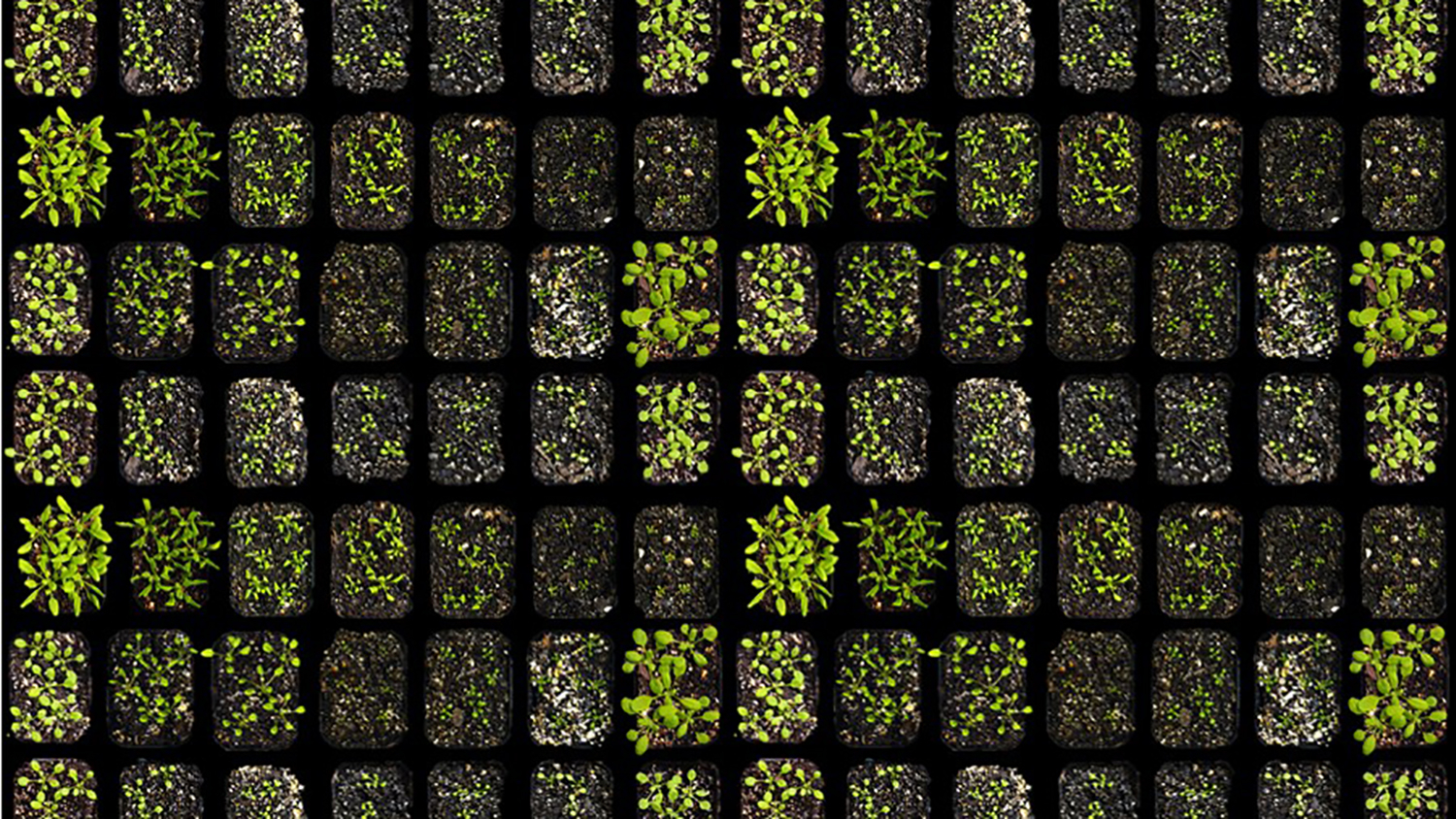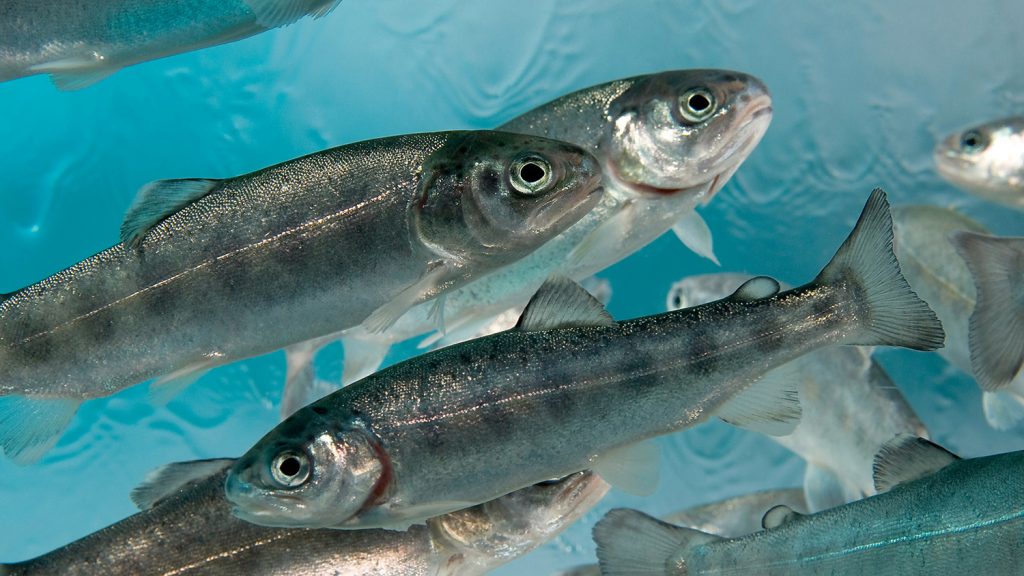
When Novozymes wanted to see if a biofiltration system for aquaculture would work under challenging conditions, it turned to the College of Agriculture and Life Sciences for help.
And when scientists with CALS, the U.S. Department of Agriculture and the Belgian research institute VIB wanted to pursue research with the potential to improve soybeans, they turned to two companies, Benson Hill and BASF, as well as the North Carolina Soybean Producers Association and the United Soybean Board, for support and collaboration.
The projects exemplify the kind of public-private collaborations that Deborah Thompson, CALS’ director of research partnerships, says benefit not just agricultural and life sciences businesses but also NC State University, its students and the North Carolina economy.
Companies may find something that doesn’t fit with their commercial goals. It could be the next innovation in agriculture.
Collaborations build on the college’s determination to address real-world challenges, and they support the education and training of both undergraduate and graduate students.
For industry, Thompson says, university research can augment their quest to deliver new and valuable products to the marketplace.
“Companies have to stay focused on milestones and deliverables to bring shareholder value, but along the way, they may find something that doesn’t fit with their commercial goals,” she adds. “It could be the next innovation in agriculture, but researchers at the company don’t necessarily have time to devote to research and evaluation of the promising idea.”
That’s one of the main reasons that companies pursue university partnerships. Companies also turn to academia because it’s particularly good at coming up with problem-solving concepts.
As Thompson explains, “They want to know what academia is doing that’s really innovative – that’s going to be the next transformation in agriculture and life sciences.”

A Not-So-Fishy Partnership
In the case of the aquaculture biofiltration research project, Novozymes brought an idea to the university. Novozymes is the world’s largest industrial biotechnology company, with several research-and-development sites in North Carolina, and it wanted to know if particular bacteria consortia – communities of microbes living together – could be used to filter wastes like ammonia and nitrite from recirculating water used in some fish-farming systems.
Kevin Mann, Novozymes’ global scientific product support manager for animal health, calls NC State “a natural first consideration when we want to externally validate ideas. … They help us demonstrate to our customers that Novozymes is engaged in real scientific advancement and that we work with premier research institutions to co-develop and validate our products.”
The company pulls us toward what is practical – what could be helpful to the company and the grower.
And Steven Hall, a CALS associate professor of biological and agricultural engineering, says that working with Novozymes was equally advantageous for the college.
“Each side has information, each side has technology, each side has capabilities. And by putting those together, it’s a synergistic benefit to everyone,” Hall says. “The company pulls us toward what is practical – what is useful that could be helpful to the company and that could be helpful to the grower.
“It sharpens us at the university by helping us see some issues that aquaculture producers are facing, not just in our state but locally and nationally, so we can gear some of our research to those real, practical needs,” he adds.
Hall’s research yielded mixed – but important – results.
“We were able to run the tests, and we were able to find some conditions where those bacteria did, in fact, advance the operations of the biofilters, which was great,” he says. “And then we found that under other conditions, not so much.
“Now that doesn’t mean that there won’t be a future product on the horizon that might be a bit better, but at this point, there are limits,” Hall adds. “You normally think knowing that something works is a good thing, and it is. But knowing that something doesn’t work under certain conditions can also be a good thing, because it can inform the company’s decisions about what to do next and when a product can fit into their application.”
Game-Changing Ideas from Within
While Hall’s project originated from an industry need, CALS plant scientist Ross Sozzani is involved in a project where she and others had an idea they believe could help make crops more resilient to temperature stress that’s expected to worsen with climate change.
Sozzani is collaborating with Anna Locke of USDA’s Agricultural Research Service; Ive De Smet of VIB; and partners with biotechnology companies BASF and Benson Hill to identify molecular signals that provide plants the ability to overcome certain stressors. Such knowledge could be used to develop plants that achieve high yields even under stress.
The industry gets direct access to workforce development that is comprehensive, holistic, interdisciplinary. We learn the direction of the research and development of the industry.
Sozzani, a CALS plant scientist who serves as the project’s co-principal investigator, says the collaboration is a win-win. It brought a combination of private and public funding to the university that supports research relevant to farmers and the education and training of graduate students.
The biggest chunk of funding came from the Foundation for Food and Agriculture Research, a national organization that leverages public and private resources to increase research, innovation and partnerships that boost America’s agricultural economy. Benson Hill, BASF, the North Carolina Soybean Producers Association and the American Soybean Board also contribute funds, as well as knowledge.
“The industry gets direct access to workforce development that is comprehensive, holistic, interdisciplinary,” Sozzani says. “And on the other side, we learn a lot in terms of the direction of the research and development of the industry, what kind of commercialization strategy we need and so forth.”
The Matchmaker and the Matchmaking
Both Sozzani and Hall credit Thompson for bringing them together with industry partners.
As the first person in the College of Agriculture and Life Sciences to be assigned exclusively to developing and maintaining industry-university research partnerships, Thompson sees her role as twofold. She’s both a matchmaker and a puzzle pro.
She’s approached by both faculty members and by industry representatives who have ideas and need help. Partnership possibilities, she says, cover a broad spectrum – from identifying genes that might be useful in plant breeding to testing formulations for animal feed and beyond.
“Everybody and every project is kind of a jigsaw puzzle piece to me. My goal is to put two or more of those jigsaw puzzle pieces together to where it makes a good picture,” she says.
And making a good match is critical, Thompson notes. The match needs to serve the interests of the university, the industry and the public.
“If it’s not a good fit, then we don’t pursue it.”
Results That Last
When Thompson finds a good fit, the research can advance basic and applied research as well as technology development. And it can further the cornerstone of NC State’s mission: education.
I got the exposure and experience of working with industry experts in solving real-world challenges.
Diplina Paul, an alumna who’s now an environmental engineer with the Arizona Department of Environmental Quality, is just one example of the many students who’ve gained from university-industry partnerships.
She says that being involved in the aquaculture project with Novozymes gave her skills she’ll likely use throughout her career.
“I learned not only about time management but also team management, and I also learned how experts from different backgrounds work towards a common scientific goal and meet their target efficiently with concurrent engineering and data-driven problem-solving approaches,” says Paul, who earned her Ph.D. in biological and agricultural engineering.
“In a nutshell,” she adds, “I got the exposure and experience of working with industry experts in solving real-world challenges.”
And helping bring together people who can solve real-world challenges for all of society is Thompson’s ultimate goal.
“By impacting the industry, university-industry collaborations impact farmers,” Thompson says. “And that impacts food production and our need to generate enough food for a world population that’s expected to approach 10 billion people by 2050. That means that successful partnerships like these benefit us all.”
Interested in expanding or creating a research partnership with CALS? Email Deborah Thompson.
Related story: Microbiome Research: What Makes a Healthy Cat?
This post was originally published in College of Agriculture and Life Sciences News.